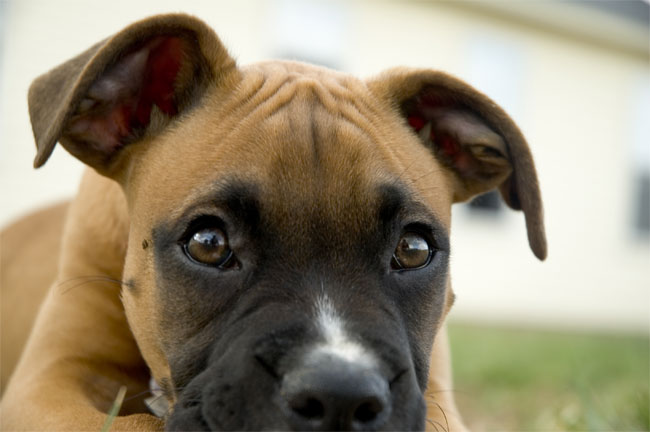Dogs' Contagious Cancer Cells May Survive By Theft

An unusual type of tumor in dogs is contagious — it can be passed from animal to animal, usually during mating. Now a study shows how this sexually transmitted cancer may work: Cancer cells can rejuvenate themselves by stealing the mitochondria, or the cellular "powerhouses," of the animals they infect.
The mitochondria inside the tumor cells tend to degenerate over time. And because mitochondria produce much of a cell’s energy, the cancer cells would eventually die without them. So capturing the mitochondria of the non-cancerous cells as the tumor cells are passed from canine to canine may rescue the tumor cells from extinction.
"I think it’s a really new and exciting discovery about how cancer might evolve to adapt to its environment," said Elizabeth Murchison, of the Wellcome Trust Sanger Institute in Hinxton, England, who has researched transmissible cancers but was not involved in the new study.
The research raises questions about how exactly this transfer happens and whether it might also occur in human cancer cells, Murchison said.
The study by Clare Rebbeck of Cold Spring Harbor Laboratory in New York and fellow researchers will be published tomorrow (Jan. 21) in the journal Science.
Contagious cancer
The cancer, which is known as canine transmissible venereal tumor (CVTV) and threatens wolves and coyotes as well as dogs, probably originated some 10,000 years ago, the researchers said. It is just one of two cancers known to be contagious. The other, which affects Tasmanian devils, is called devil facial tumor disease.
Sign up for the Live Science daily newsletter now
Get the world’s most fascinating discoveries delivered straight to your inbox.
Researchers sequenced the genes of CVTV samples from around the world. They sequenced both the nuclear DNA ― the genetic material in the cell's nucleus that dogs inherit from both their parents ― and the DNA in the mitochondria that are passed down only from the mother.
The mitochondrial DNA displayed a much higher mutation rate than the researchers expected.
The researchers then compared the mitochondrial DNA of the tumor cells with the mitochondrial DNA of the canines they infected.
"In some cases we found that the mitochondrial genomes of some tumors were more similar to the mitochondrial genomes of dogs than they were to other tumors," said Rebbeck, whose laboratory is a nonprofit research and training institution in Cold Spring Harbor, N.Y.
This key finding indicated the tumor cells were acquiring new mitochondria from cells of each dog they infected. Previously, scientists had seen the transfer of mitochondria from one cell to another in a lab dish, but never in a living animal, Rebbeck told MyHealthNewsDaily.
"We've shown that this can occur in a natural environment, not just in a cell culture," Rebbeck said.
However, the researchers can't say how often this transfer occurs. They know it does not happen in every case of CVTV, and perhaps it will occur only two or three times during a cancer's evolution, Rebbeck said.
Can human cancers do this?
It would be very hard to detect whether this type of mitochondrial transfer occurs in human cancers, Rebbeck added. Though some human cancers, such as cervical cancer, can be caused by contagious viruses, human cancer cells themselves are not contagious. This means the mitochondria of the cancer cells and mitochondria of the non-cancer cells would be very similar, she said.
Murchison said researchers should still try to look for any differences.
"People should be very careful looking to see where the mitochondria of cancers have derived from," Murchison said. "There would be very subtle differences between the mitochondria of the cancer and the mitochondria of the host that could easily be missed unless people are open to the possibility” that a transfer occurred.
However, Rebbeck said human cancer cells ― unlike CTVT cells, which keep living as they are passed from animal to animal ― are only as old as the person they're in. So it's possible human cancer doesn’t have enough time for such a transfer, she said.
Pass it on: Cells of a contagious dog cancer can rejuvenate themselves by capturing the mitochondria of the cells of its host.
In Parkinson's Disease Patients, Brain Cells Lose Their 'Powerhouses'Estrogen May Push Some Cells into Cancerous StateHow Cells Can Ward Off Cancer-Causing Virus
Follow MyHealthNewsDaily staff writer Rachael Rettner on Twitter @Rachael_MHND.










